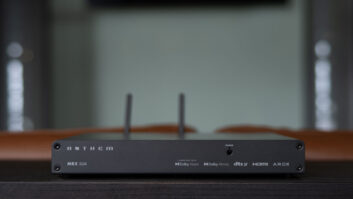With 2016 rapidly coming to a close, it’s time to take stock of what became of the last 12 months in home technology stories. There is a lot to cover here, so let’s dive right in with the five biggest home tech stories of 2016.
1. Wi-Fi Systems.
Eero WiFi SystemMesh Wi-Fi Systems were all the rage this year. In fact, I recently wrote a whole blog post about this exploding category. Simultaneously one of the most prominent and unexpected stories of the year, it seemed like every few weeks a story would surface about one of these new so-called “Wi-Fi Systems.” Designed to vastly simplify the process of setting up a mesh Wi-Fi network, and all priced under $500, these products constitute a very compelling offering to consumers craving more and more coverage and speed from their wireless setup.
Some of the most prominent offerings in this category include Eero, Luma, Plume, Ubiquiti AmpliFi, Securifi’s Almond 3, Netgear’s Orbi, and Google Wi-Fi. In an interesting twist, Apple recently announced its exit from the Wi-Fi business with the quiet closing of its wireless router division. I suspect that the huge amount of competition in this relatively commoditized space factored into that decision.
2. Cyber Security Concerns.
Image: ThinkStock A recent spate of high-profile DDoS (distributed denial of service) attacks brought the issue of security in the connected home to the fore. Most prominently, an army of hijacked computing devices known as the Mirai Botnet took aim at Dyn, one of the internet’s major Domain Name System (DNS) providers, causing major internet outages all over the country. The inclusion in this botnet army of thousands of internet-connected cameras from a popular Chinese manufacturer Xiongmai led many in the tech press to blame the IoT.
While Xiongmai’s connection to what most people would consider the Internet of Things is questionable, there can be no doubt the exploding number of connected devices in the home represent a tempting target for hackers. 2016 represented a turning point in that consumers have become hyper-aware of the potential security risks the smart home poses. I suspect consumers will bring increasing pressure to bear on manufacturers of these devices to implement proper security protocols. I also wouldn’t be at all surprised to see an increase in regulatory bodies surrounding the industry.
3. Voice Control.
Amazon Alexa Echo with BridgeNo conversation about this year in home technology would be complete without giving voice control a nod. Amazon has seen continued success with the Echo platform, expanding the line this year to include the Echo Dot and Echo Tap. There are also rumors starting to circulate about a forthcoming Echo with a built-in 7-inch touch screen. Google took its queue from the success of Echo by releasing Google Home. With a similar form factor as the Echo, and backed by the power of Goolge’s vast Knowledge Graph, Google Home will no doubt be serious contender moving forward. Newcomer Josh.ai is approaching the market with a premium offering sold through CEDIA integrators. And Apple continues to tout the power of Siri as a control interface for HomeKit. The battle for control the smart home VUI (voice user interface) has really begun to heat up.
4. RSM and Managed Services.
Domotz Pro2 You could hardly turn a corner at CEDIA 2016 without someone offering you a solution around remote systems management or managed services. RSM, a category at one time defined only by Ihiji, has become an increasingly crowded space. Newcomers like Domotz, Krika, and Digital Butler are targeting the space. While established players are bringing their own offerings to the table including Control4’s BakPak, Access Networks’ “Central Station” initiative, and SnapAV’s OVRC Pro. From a managed service perspective, OneVision’s new Integrator Service Desk represents an all-new approach, and one of the year’s more intriguing stories. This will be a very interesting segment of the market to watch moving forward.
5. Physical Control. 2016 can be marked as the year that app-fatigue began to manifest itself in a significant way—namely a revitalized interest in physical control devices. Smart home users are looking for means of control that don’t involve fumbling for a phone or reaching for a tablet. And manufacturers are paying attention.





Flic button Flic, a company based in Sweden, produces what it calls “the world’s smartest button.” These compact wireless buttons can be used to control devices such as Sonos, LIFX, Hue, and more. They can also be integrated with IFTTT. The Button by Fibraro, recently named a 2017 CES Innovations Smart Home Honoree, is exactly what its name implies—a singular, physical button that can be used to activate or control connected devices. Logitech is getting in on the fun with its new Pop Home Switch. And Lutron is pushing further into smart home control with its release of Pico Remote for Sonos. Hey look… an audio keypad! What’s old is new again.
So there you have it. It’s been a busy year in the smart home. Did I miss any of your biggest stories? Would love to hear about them. Let me know in the comments below.







